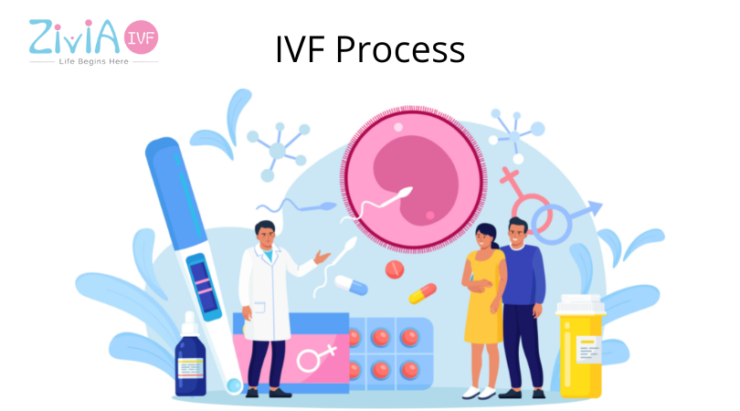In vitro fertilization (IVF) - A Step-By-Step Look at the IVF Process

In the modern age when someone is facing fertility issues, in vitro fertilization (IVF) probably is the treatment they have been suggested by some or other doctor.
IVF has been around many and you most likely already know the IVF and the use of IVF in infertility treatment. The basic idea behind IVF is uniting or fertilizing female eggs and sperm outside the body. But there are multiple steps that happen before and after that. Here’s a closer look at the IVF process in simple steps.
IVF is commonly used in the treatment of:
- Older women with fertility issues
- Women with damaged or blocked fallopian tubes
- Women with endometriosis
- Male infertility is caused by oligospermia which is low sperm count or blockage
The IVF Process
Boost your egg production through superovulation
You’ll be given fertility drugs that will begin a process called ovarian stimulation or superovulation. These medicines contain Follicle Stimulating hormones it will tell your body to produce more than just the normal one egg per month.
The more eggs your body produces, the higher chances you’ll have of successful fertilization later on in the treatment.
You’ll receive transvaginal ultrasounds and some blood tests on a regular basis during this step in the IVF process to check on your ovaries and monitor your hormone levels.
Remove the eggs
A little more than a day before your eggs are scheduled to be retrieved from your body, you’ll receive a hormonal injection that will help your eggs mature quickly.
Then, the doctor will perform a minor surgical procedure known as follicular aspiration, to remove the eggs from the ovary. This is usually done as an outpatient procedure in a doctor’s clinic. During the procedure, the doctor will use an ultrasound probe to guide a thin needle into each of the ovaries through the patient’s vagina. The needle has a device attached to it that carefully suctions the eggs out one at a time.
This part sounds painful, however, the doctor will probably give medicine beforehand so that you won’t feel any discomfort. You may experience some cramping afterward, but this usually disappears within a day without any complications.
Collect sperm from your husband or a donor
While eggs are being removed from ovaries, your husband will provide a sperm sample. In some cases you may also choose to use donor sperm. The sperm are then sent for a procedure of high-speed wash and spin cycle in order to separate the healthiest sperms.
Unite sperm and eggs
After all these steps, now comes the part of IVF that everyone’s the most familiar with that is combining the best sperm with your best eggs. This stage is known as insemination.
Usually, it takes a few hours for an egg to be fertilized by sperm. In special cases, the doctor may also inject the sperm directly into the egg using a process known as intracytoplasmic sperm injection (ICSI).
Transfer the embryo(s) into your uterus
Once eggs have been collected you’ll receive yet another medication. This one is meant to prepare the inner lining of your uterus to support the embryos that will be transferred back into your uterus.
About three to five days after fertilization, your doctor will transfer the embryos into your uterus using a catheter. This step of IVF is also usually performed in your doctor’s clinic.
Multiple embryos are placed into your uterus with the assumption that at least one will implant itself in the lining of your uterus and begin to develop. Sometimes more than one embryo ends up implanting, which is why twins/triplets are common in women who use IVF.
The IVF process basically replicates natural reproduction. The next step after the IVF process determines whether the outcome of the procedure is a pregnancy test. After this patient is usually monitored like other pregnant women
